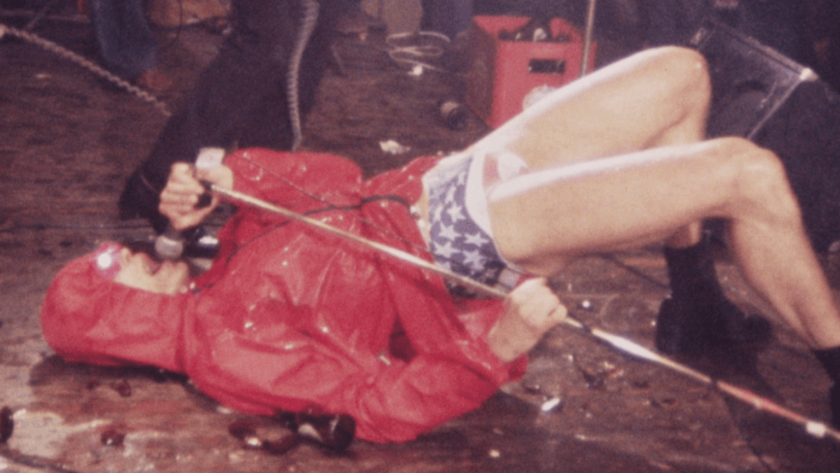Alina Elena reviews a documentary on the Dutch punk scene as part of our Raindance 2020 coverage.
Mostly focusing on 16mm and Super 8 footage shot by a professional crew at Panic’s 1978 concert in Gouda, Jimmy is Punk – The story of PANIC is the first directorial project by Dutch video editor Duco Dunk. The documentary-style feature follows the quick rise to fame and the abrupt end of now-obscure Dutch punk band Panic. Dunk’s movie represents an invaluable resource not only for the band’s fans, but for the music world as a whole also.
Starting with a montage that employs both colour and black and white footage as well as photos of the band, a voice-over presents two beginnings: that of punk, and that of Panic. The footage perfectly conveys the atmosphere described by the voice-over: the intense energy, the rawness, the electrifying freedom and excitement of the late 70s punk attitude. The audio of this introductory scene plays a unifying role for the montage — in the background Panic’s ‘Requiem For Martin Heidegger’ can be heard. This instills the idea that the music of Panic, along with their scene performance, represents the essence of the early days of punk. The introductory sequence provides the viewer with further information about the song playing in the background and how certain artistic choices led to the disappearance of the record from stores. It is but one example of the sacrifices punk bands were willing to make in order to maintain artistic integrity, composing thought-provoking lyrics they believed would stir the collective consciousness into exiting the status quo.
Although the film is centred around one band, it captures the entire atmosphere of the mid-70s, with its crises of both youth identity and political scandal; the struggle to affirm oneself as an individual and the mistrust of authority. The 70s music scene was all about liberation, about breaking the rules without caring for the consequences. This attitude is perfectly revealed in the movie, the concert audience becoming a cardinal collective character. Both the camera operators and the band treat the audience as integral to the show, thus centring the focus around the atmosphere and attitude in the room, transforming a one-time experience into a limitless one. Consequently, the film transgresses all temporal and spatial barriers, becoming itself a pivotal moment for the punk movement and the music industry itself, with the power to make the viewer feel as though they were a part of the event. The fourth wall is indirectly broken, the viewer too becomes an essential character. As a result, the viewers, regardless of their music taste and views of the world, can detach from themselves for fifty minutes and, be immersed into the concert’s intoxicating atmosphere, and become one with the crowd.

Dunk does not limit himself with the rules of documentary. Instead, he decides to make the film a punk experience in itself by playing around with, and breaking, those rules. The movie employs documentary techniques, such as using montage as an establishing approach for the main themes and objects of interest, using archive footage and a voice-over that guides the viewer into the cinematic universe by exploring background information and the events of the movie. However, the voice-over is unreliable at times, as the viewer finds out in the end that one piece of information was altered. Perhaps an act of rebellion from Dunk, in some attempt to match the force of the audience; a reading reinforced by the amused reaction at the destruction left behind by the Gouda audience in the club and at the hostile response of the club owners. The voice-over is also completely absent during the Gouda concert footage, transforming the documentary into an audio-visual installation in which the atmosphere of the event does not need any further explanation. Alone, it provides us with a blueprint of the rawness and force that allowed Panic to be one of the first Dutch bands to play in the US, most notably at CBGB, a club described as “the very cradle of punk in the USA” by the narrator.
All in all, Jimmy is Punk – The story of PANIC proves to be a stimulating documentary, concentrating on one punk band’s very short career, and the electrifying concert they gave in Gouda in 1978. Panic embedded a raw, authentic, powerful, and rebellious attitude into their performances, and treated the audience as part of the show. Thus, they accurately represented the still-forming punk genre. In the same fashion, Duco Dunk’s film breaks the formal characteristics of the well-established documentary genre, defying time and space, and offering the viewer a proper punk experience that becomes a vital moment in music history.




